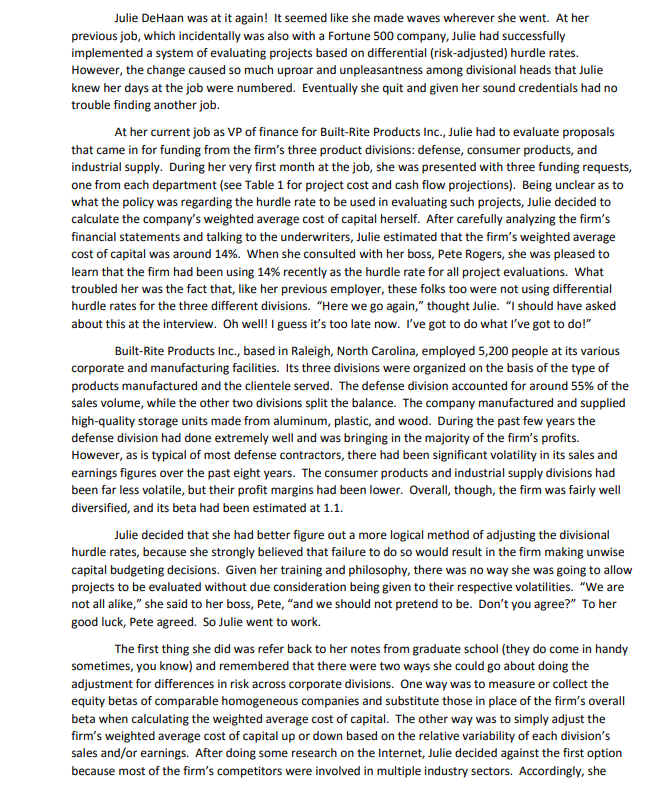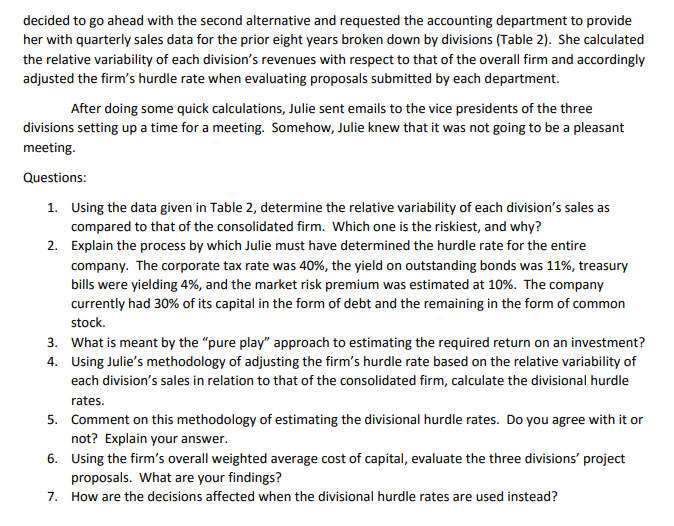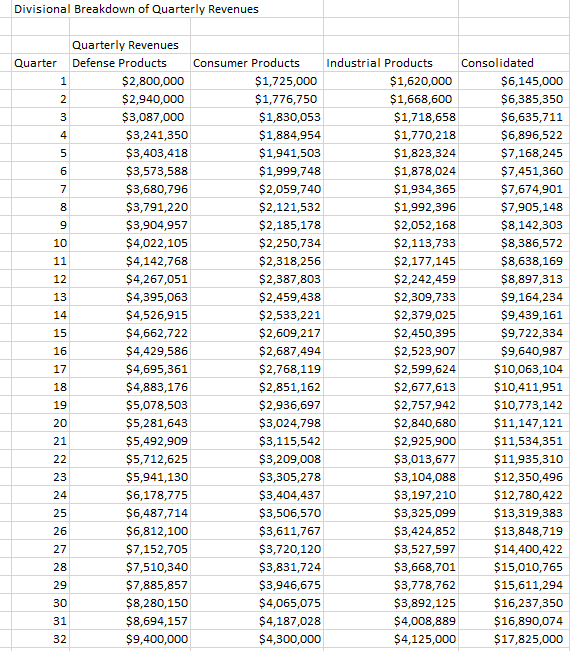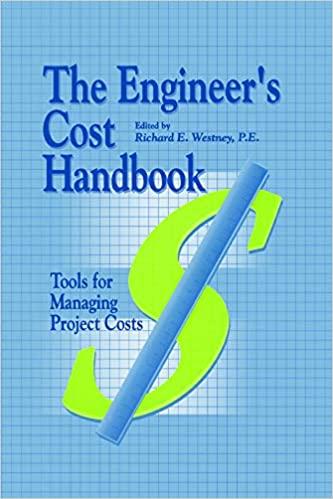Answered step by step
Verified Expert Solution
Question
1 Approved Answer
I could really use some help. Im a little lost on the topic Julie DeHaan was at it again! It seemed like she made waves




I could really use some help. Im a little lost on the topic
Julie DeHaan was at it again! It seemed like she made waves wherever she went. At her previous job, which incidentally was also with a Fortune 500 company, Julie had successfully implemented a system of evaluating projects based on differential (risk-adjusted) hurdle rates. However, the change caused so much uproar and unpleasantness among divisional heads that Julie knew her days at the job were numbered. Eventually she quit and given her sound credentials had no trouble finding another job At her current job as VP of finance for Built-Rite Products Inc., Julie had to evaluate proposals that came in for funding from the firm's three product divisions: defense, consumer products, and industrial supply. During her very first month at the job, she was presented with three funding requests, one from each department (see Table 1 for project cost and cash flow projections). Being unclear as to what the policy was regarding the hurdle rate to be used in evaluating such projects, Julie decided to calculate the company's weighted average cost of capital herself. After carefully analyzing the firm's financial statements and talking to the underwriters, Julie estimated that the firm's weighted average cost of capital was around 14%. when she consulted with her boss, Pete Rogers, she was pleased to learn that the firm had been using 14% recently as the hurdle rate for all project evaluations. what troubled her was the fact that, like her previous employer, these folks too were not using differential hurdle rates for the three different divisions. "Here we go again," thought Julie. "I should have asked about this at the interview. Oh well! I guess it's too late now. I've got to do what I've got to do!" Built-Rite Products Inc., based in Raleigh, North Carolina, employed 5,200 people at its various corporate and manufacturing facilities. Its three divisions were organized on the basis of the type of products manufactured and the clientele served. The defense division accounted for around 55% of the sales volume, while the other two divisions split the balance. The company manufactured and supplied high-quality storage units made from aluminum, plastic, and wood. During the past few years the defense division had done extremely well and was bringing in the majority of the firm's profits. However, as is typical of most defense contractors, there had been significant volatility in its sales and earnings figures over the past eight years. The consumer products and industrial supply divisions had been far less volatile, but their profit margins had been lower. Overall, though, the firm was fairly well diversified, and its beta had been estimated at 1.1 Julie decided that she had better figure out a more logical method of adjusting the divisional hurdle rates, because she strongly believed that failure to do so would result in the firm making unwise capital budgeting decisions. Given her training and philosophy, there was no way she was going to allow projects to be evaluated without due consideration being given to their respective volatilities. "We are not all alike," she said to her boss, Pete, "and we should not pretend to be. Don't you agree?" To her good luck, Pete agreed. So Julie went to work. The first thing she did was refer back to her notes from graduate school (they do come in handy sometimes, you know) and remembered that there were two ways she could go about doing the adjustment for differences in risk across corporate divisions. One way was to measure or collect the equity betas of comparable homogeneous companies and substitute those in place of the firm's overall beta when calculating the weighted average cost of capital. The other way was to simply adjust the firm's weighted average cost of capital up or down based on the relative variability of each division's sales and/or earnings. After doing some research on the Internet, Julie decided against the first option because most of the firm's competitors were involved in multiple industry sectors. Accordingly, sheStep by Step Solution
There are 3 Steps involved in it
Step: 1

Get Instant Access to Expert-Tailored Solutions
See step-by-step solutions with expert insights and AI powered tools for academic success
Step: 2

Step: 3

Ace Your Homework with AI
Get the answers you need in no time with our AI-driven, step-by-step assistance
Get Started


